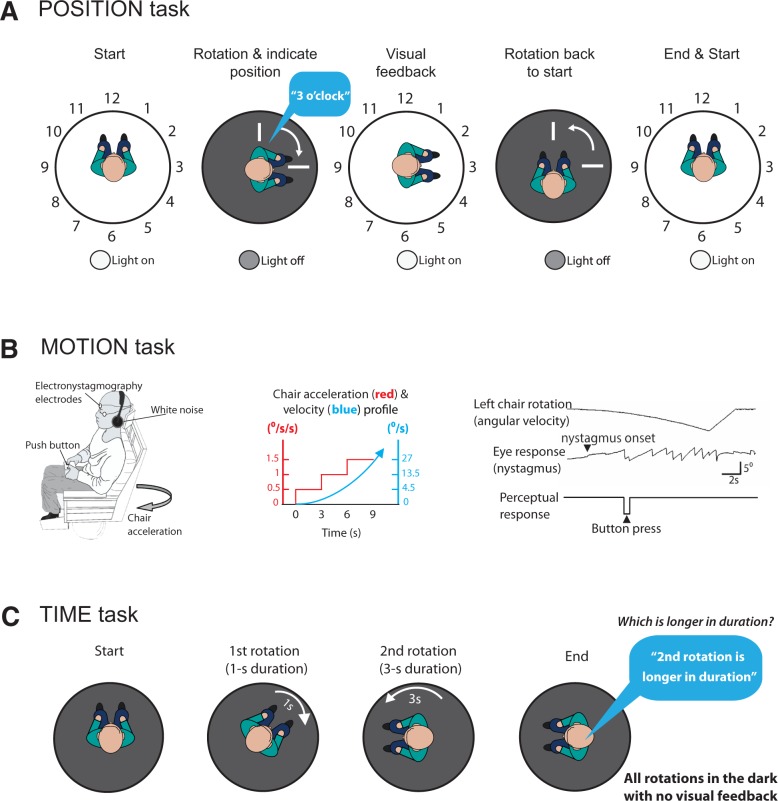Figure 1.
Experimental protocols and methods. (A) Position task methods. Participants sat in a motorized rotating chair surrounded by a curtain with the numbers of the clock facing the participant. The chair rotated from the 12 o’clock position (‘start’) to another location in the dark, and participants then verbally indicated their perceived clock face position (‘rotation and indicate position’). The lights were then switched on to provide visual feedback (‘feedback’). The lights were then turned off and the chair rotated back to the start position (‘rotation back to start’), and the lights switched on (‘end and start’). (B) Motion task methods. Participants were asked to indicate when they perceived motion using button presses (right) to indicate right or left as soon as they felt they were moving. Simultaneous ocular motor responses were measured at nystagmus onset, and recorded using electro-oculography. (C) Time comparison task methods. Participants were given two distinct angular rotations of varying durations, and asked to indicate which of the two rotations (first or second) was longer in duration.

